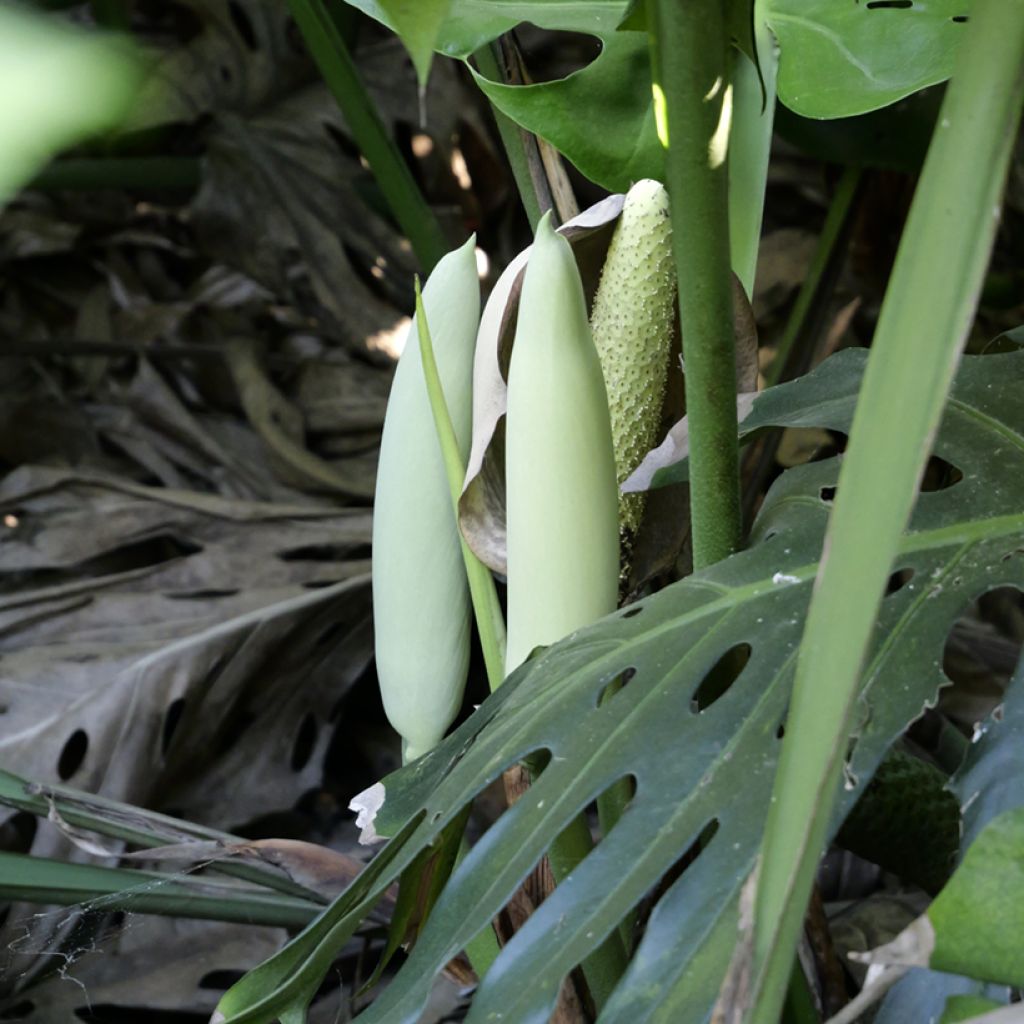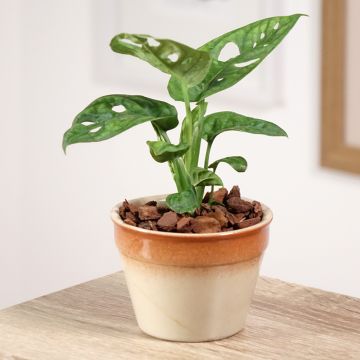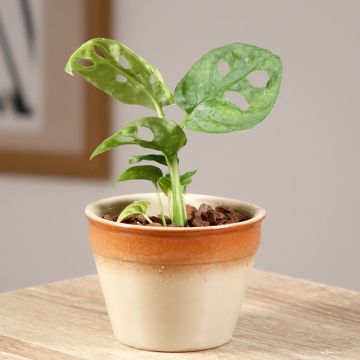

Monstera deliciosa seeds - Swiss cheese plant


Monstera deliciosa seeds - Swiss cheese plant


Monstera deliciosa seeds - Swiss cheese plant


Monstera deliciosa seeds - Swiss cheese plant


Monstera deliciosa seeds - Swiss cheese plant
Monstera deliciosa seeds - Swiss cheese plant
Monstera deliciosa
Swiss cheese plant, cheese plant
Special offer!
Receive a €20 voucher for any order over €90 (excluding delivery costs, credit notes, and plastic-free options)!
1- Add your favorite plants to your cart.
2- Once you have reached €90, confirm your order (you can even choose the delivery date!).
3- As soon as your order is shipped, you will receive an email containing your voucher code, valid for 3 months (90 days).
Your voucher is unique and can only be used once, for any order with a minimum value of €20, excluding delivery costs.
Can be combined with other current offers, non-divisible and non-refundable.
Home or relay delivery (depending on size and destination)
Schedule delivery date,
and select date in basket
This plant carries a 6 months recovery warranty
More information
We guarantee the quality of our plants for a full growing cycle, and will replace at our expense any plant that fails to recover under normal climatic and planting conditions.
Does this plant fit my garden?
Set up your Plantfit profile →
Description
Monstera deliciosa, also known as Swiss Cheese Plant, or "philo", is a houseplant that needs no introduction. Its large, split foliage, vigorous growth, and low maintenance have made it a favourite in many living rooms, conservatories, and spacious offices. It can be fun to grow this delightful gentle giant from seed, though sowing requires a bit of patience and dexterity.
Belonging to the Araceae family, Monstera deliciosa is native to the humid tropical forests of southern Mexico down to Panama. In its natural habitat, this climbing plant can reach up to 20m in height by supporting itself on neighbouring trees with its aerial roots. The name "Monstera" derives from the Latin for "monstrous", referring to the plant's imposing size and characteristic perforated leaves, while "deliciosa" highlights the delicious flavour of its fruit in regions where it can thrive. The leaves of Monstera deliciosa are broad, glossy, and heart-shaped when young. As they mature, they develop deep splits and irregular perforations, growing up to 90cm long and 75cm wide. The plant exhibits rapid growth, especially in optimal warm and humid conditions. Indoors, in pots, it typically reaches between 1.5m and 2m in height, depending on container size and care. The stems are sturdy and may produce long aerial roots that help the plant climb and absorb moisture from the air. Though flowering is rare indoors, in its natural environment Monstera produces compound inflorescences with a white spathe surrounding a spadix, followed by edible fruits tasting like a mix of pineapple and banana.
To showcase Monstera deliciosa in your home, place it in a spacious living room or bright conservatory, where its lush foliage can flourish. Avoid direct south-facing windows without sheer curtains, but it still needs light to prevent leggy growth. This plant complements all decor styles, from traditional to baroque or contemporary. Use a terracotta or ceramic pot in neutral tones. Adding a thick moss pole will allow the plant to climb and develop large, split leaves.
Report an error about the product description
Monstera deliciosa seeds - Swiss cheese plant in pictures




Foliage
Plant habit
Botanical data
Monstera
deliciosa
Araceae
Swiss cheese plant, cheese plant
Philodendron pertusum, Dracontium pertusum, Monstera pertusa
South America
Other Monstera
View all →Planting and care
Sowing Monstera deliciosa:
Begin by soaking the seeds in lukewarm water for 24 hours to rehydrate the coats and encourage germination. Next, prepare a light, well-draining substrate, such as potting mix for houseplants blended with perlite or coconut fibre. Sow the seeds by pressing them lightly into the substrate, then water gently to moisten without saturating. Place the container in a warm spot, between 25 and 30°C, and maintain consistent humidity by covering it with perforated cling film or a transparent lid. Germination can take a month or longer, so patience and regular monitoring of the substrate's moisture are essential.
Once the seedlings have developed a few leaves and their roots are sturdy enough, it's time to transplant. Move each young plant into an individual pot filled with a rich, well-draining potting mix. After repotting, water moderately and place the pots in a spot with indirect light, away from draughts. It's recommended to repot Monstera deliciosa every one to two years, gradually increasing the pot size to accommodate its growth.
Growing Monstera deliciosa: This plant thrives in bright light without direct sun exposure through glass, which can scorch its leaves. However, it will become leggy if light is insufficient—position it 1 to 2 metres from a window with a sheer curtain. Keep the substrate slightly moist in summer, reducing watering in winter to avoid excess water that could lead to root rot. You can mist its foliage regularly during heating season, though this isn't necessary the rest of the year. A houseplant fertiliser applied every two to three weeks from February to September will support vigorous growth.
Sowing period
Intended location
Planting & care advice
This item has not been reviewed yet - be the first to leave a review about it.
Haven't found what you were looking for?
Hardiness is the lowest winter temperature a plant can endure without suffering serious damage or even dying. However, hardiness is affected by location (a sheltered area, such as a patio), protection (winter cover) and soil type (hardiness is improved by well-drained soil).

Photo Sharing Terms & Conditions
In order to encourage gardeners to interact and share their experiences, Promesse de fleurs offers various media enabling content to be uploaded onto its Site - in particular via the ‘Photo sharing’ module.
The User agrees to refrain from:
- Posting any content that is illegal, prejudicial, insulting, racist, inciteful to hatred, revisionist, contrary to public decency, that infringes on privacy or on the privacy rights of third parties, in particular the publicity rights of persons and goods, intellectual property rights, or the right to privacy.
- Submitting content on behalf of a third party;
- Impersonate the identity of a third party and/or publish any personal information about a third party;
In general, the User undertakes to refrain from any unethical behaviour.
All Content (in particular text, comments, files, images, photos, videos, creative works, etc.), which may be subject to property or intellectual property rights, image or other private rights, shall remain the property of the User, subject to the limited rights granted by the terms of the licence granted by Promesse de fleurs as stated below. Users are at liberty to publish or not to publish such Content on the Site, notably via the ‘Photo Sharing’ facility, and accept that this Content shall be made public and freely accessible, notably on the Internet.
Users further acknowledge, undertake to have ,and guarantee that they hold all necessary rights and permissions to publish such material on the Site, in particular with regard to the legislation in force pertaining to any privacy, property, intellectual property, image, or contractual rights, or rights of any other nature. By publishing such Content on the Site, Users acknowledge accepting full liability as publishers of the Content within the meaning of the law, and grant Promesse de fleurs, free of charge, an inclusive, worldwide licence for the said Content for the entire duration of its publication, including all reproduction, representation, up/downloading, displaying, performing, transmission, and storage rights.
Users also grant permission for their name to be linked to the Content and accept that this link may not always be made available.
By engaging in posting material, Users consent to their Content becoming automatically accessible on the Internet, in particular on other sites and/or blogs and/or web pages of the Promesse de fleurs site, including in particular social pages and the Promesse de fleurs catalogue.
Users may secure the removal of entrusted content free of charge by issuing a simple request via our contact form.
The flowering period indicated on our website applies to countries and regions located in USDA zone 8 (France, the United Kingdom, Ireland, the Netherlands, etc.)
It will vary according to where you live:
- In zones 9 to 10 (Italy, Spain, Greece, etc.), flowering will occur about 2 to 4 weeks earlier.
- In zones 6 to 7 (Germany, Poland, Slovenia, and lower mountainous regions), flowering will be delayed by 2 to 3 weeks.
- In zone 5 (Central Europe, Scandinavia), blooming will be delayed by 3 to 5 weeks.
In temperate climates, pruning of spring-flowering shrubs (forsythia, spireas, etc.) should be done just after flowering.
Pruning of summer-flowering shrubs (Indian Lilac, Perovskia, etc.) can be done in winter or spring.
In cold regions as well as with frost-sensitive plants, avoid pruning too early when severe frosts may still occur.
The planting period indicated on our website applies to countries and regions located in USDA zone 8 (France, United Kingdom, Ireland, Netherlands).
It will vary according to where you live:
- In Mediterranean zones (Marseille, Madrid, Milan, etc.), autumn and winter are the best planting periods.
- In continental zones (Strasbourg, Munich, Vienna, etc.), delay planting by 2 to 3 weeks in spring and bring it forward by 2 to 4 weeks in autumn.
- In mountainous regions (the Alps, Pyrenees, Carpathians, etc.), it is best to plant in late spring (May-June) or late summer (August-September).
The harvesting period indicated on our website applies to countries and regions in USDA zone 8 (France, England, Ireland, the Netherlands).
In colder areas (Scandinavia, Poland, Austria...) fruit and vegetable harvests are likely to be delayed by 3-4 weeks.
In warmer areas (Italy, Spain, Greece, etc.), harvesting will probably take place earlier, depending on weather conditions.
The sowing periods indicated on our website apply to countries and regions within USDA Zone 8 (France, UK, Ireland, Netherlands).
In colder areas (Scandinavia, Poland, Austria...), delay any outdoor sowing by 3-4 weeks, or sow under glass.
In warmer climes (Italy, Spain, Greece, etc.), bring outdoor sowing forward by a few weeks.










































